CYS is 60 Years Young
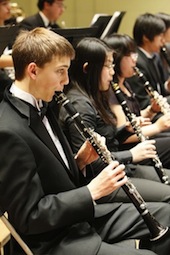 California Youth Symphony celebrates its 60th season with a series of important events:
California Youth Symphony celebrates its 60th season with a series of important events: - A concert in the UC Davis Mondavi Center for the Performing Arts on Nov. 13, featuring the premiere of California composer Stephen Blumberg’s Subterranean River. The concert will include William Walton’s Cello Concerto, with Eunice Kim, winner of the 2010 California Youth Symphony Young Artist Competition, as soloist. Also on the program: Copland’s Billy the Kid Ballet Suite, and Bernstein’s Symphonic Suite from On the Waterfront.
- The concert will be repeated the following Sunday, Nov. 20, at 2:30 p.m. at the Flint Center on the campus of De Anza College, Cupertino.
- On Jan. 15, the Youth Symphony will appear in the third “Bay of Hope” Bay Area Youth Orchestra Festival in Davies Symphony Hall
- Next June, California Youth Symphony goes on a tour of New Zealand, the 19th international tour since the orchestra pioneered the concept in 1963 with a tour to Japan.
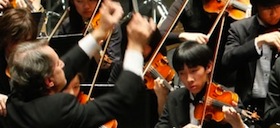
The New Zealand tour includes concerts in Auckland, Wellington, and Rotorua (as part of a July 4th Independence Day celebration), and will culminate with a collaborative concert fund-raising effort with the Christchurch Youth Orchestra at the Oamaru Opera House to help the victims of the 2011 earthquake. Before departing on tour, California Youth Symphony will present its New Zealand Tour program on June 24 to local audiences in concert at Foothill College’s Smithwick Theatre.
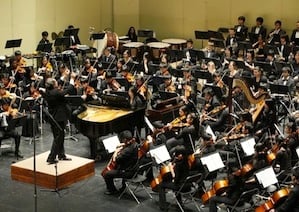
Under its third music director, Leo Eylar, California Youth Symphony — one of the state’s oldest youth orchestras — continues to educate young musicians and delight audiences with performances. The organization has earned a worldwide reputation for innovation, being the first U.S. youth orchestra ever to tour overseas, winning first prize at an international youth orchestra competition, and helping to initiate and organize the “Bay of Hope” Bay Area Youth Orchestra Festival.
Since its founding in 1952, California Youth Symphony has grown to include two full symphony orchestras, the California Youth Symphony Orchestra and the California Youth Symphony Associate Orchestra, as well as six ensembles for younger musicians. This season’s California Youth Symphony membership includes close to 500 of the most promising young musicians, ranging in age from 9 to 18 from throughout the Bay Area, representing more than 100 schools between San Francisco and Morgan Hill. Members are chosen at auditions held each spring.
Clarity in Herbst, Hope for the War Memorial
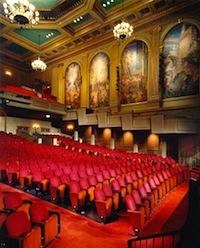 The superb recital Thursday by Simon Keenlyside and Malcolm Martineau was a triumph of clarity — the singer’s exceptional diction in German, French, and English; his impeccable projection and effortless tone; Martineau’s pearly accompaniment — and Herbst’s combined to give Wigmore Hall a run for its money.
The superb recital Thursday by Simon Keenlyside and Malcolm Martineau was a triumph of clarity — the singer’s exceptional diction in German, French, and English; his impeccable projection and effortless tone; Martineau’s pearly accompaniment — and Herbst’s combined to give Wigmore Hall a run for its money. It’s a joy to hear everything (except Keenlyside’s mumbled introduction to his first encore) so well, with such ease. The hope is that as the acoustical improvements continue, it all will turn out to be even better — though when the side boxes come down, let’s cross fingers for that major change.
In the Nov. 8 issue of SFCV's Music News, there will be a feature dealing with both the Herbst acoustical adjustments and the pending $132 million seismic retrofit for the War Memorial Building, closing the building from 2013 through 2015, and creating a major new space for the SF Opera, even without the Gockley-proposed annex on the Franklin Street side.
Leah Crocetto, who has both voice and ears, very much liked the sound at the recital from the seats, and said she is looking forward to the Dec. 1 Adlers concert in Herbst, where she will sing Verdi and Rossini (Semiramide).
Other Adler participants are sopranos Susannah Biller and Sara Gartland; mezzo-soprano Maya Lahyani; countertenor Ryan Belongie; tenors Brian Jagde and David Lomelí; baritone Austin Kness; and apprentice coaches Tamara Sanikidze and Allen Perriello.
How Does Xerxes Go So Far So Fast?
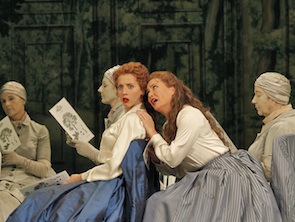
Not only does San Francisco Opera’s new (and premiere) production of Xerxes run short for a Handel opera — timing is 2:50 for the music without cuts, 3:42 for the entire evening, including two intermissions and bows — but conductor Patrick Summers is driving it hard, and there is something else, too.
Rather, it’s something that’s not there. Unlike just about every other Handel opera, most of its arias are written without ritornello or da capo.
Says Summers:
In Xerxes, we hear Handel boldly experimenting with new forms: the endless parade of A-B-A structured arias is gone. We have truncated thoughts, arias, and symphonies interrupted by recitatives, short choruses, and ensembles, so rare in Baroque opera.And a contemporary of the composer’s, the Earl of Shaftesbury, noted that against the usual long, three-movement da capo arias, Serse (its original title) has unusual brief airs and lack of recitatives. He added: “My own judgment is that it is a capital opera notwithstanding ’tis called a ballad one.”
Among the inventive set elements in this much-praised Nicholas Hytner/David Fielding import from the English National Opera is an elaborate model of Xerxes’ first Hellespont bridge, whose onstage collapse mirrors a bizarre historical incident.
When the real flax-and-papyrus bridge collapsed over the Dardanelles, mad King Xerxes executed the architects, then ordered the straits punished, by lashing the water 300 times and branding it with hot irons. This and other chapters from Xerxes’ crazy and heroic history might have made a more lively opera than his confused love life.
Mill Valley Chamber Music: a Program for Romantic Audiences
Mill Valley Chamber Music Society’s Nov. 13 concert has a program for which I’d cross Golden Gate Bridge both ways, including the toll direction. The chamber ensemble Concertante is heading to the Mt. Tamalpais United Methodist Church in Mill Valley to give this concert:- R. Strauss, Capriccio, Op. 85
- Schoenberg, Verklärte Nacht (Transfigured night) for string sextet
- Brahms, String Sextet in B-Flat Major, Op. 18
The tickets cost only $15 to $30, available in advance from Brown Paper Tickets, and also at the door.
Concertante is in its 15th season, having performed in many venues. The ensemble this year consists of violinists Lisa Shihoten and Xiao-Dong Wang; violists Dov Scheindlin, Rachael Shapiro, and Shmuel Katz; cellists Alexis Pia Gerlach and Zvi Plesser; clarinetist Christopher Grymes; and pianist Gilles Vonsattel.
Longtime Wagner Society President Dies
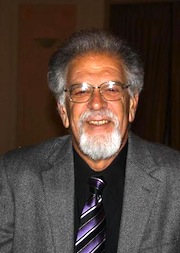
Terri Stewart, of the Wagner Society of Northern California, reports the sudden death last week of the organization’s president, Steve Sokolow, 67. The programmer and mathematician, who served the Society’s board for almost all its 30 years of existence, suffered a fatal heart attack.
Stuart writes:
Many people in the music community know Steve not only was an avid Wagnerian, but also supported Opera San José, West Bay Opera, West Edge Opera, Cal Performances, and S.F. Performances, to name a few — and he followed the Grateful Dead.Steve was a long-time subscriber and standee at the San Francisco Opera. But it was his love of Wagner that made Steve so special to so many. He served as President in the 1980s and took up the job again in the late 1990s. He also served as an editor for the Society’s publication, Leitmotive.Sokolow had an encyclopedic knowledge of Wagner’s works, writings and the man himself.
Steve came alive in the theater during Wagner performances. He was especially fond of some of the greats seen in San Francisco, especially Leonie Rysanek, Jon Vickers, James Morris, Thomas Stewart, Hans Hotter, Kurt Moll, and Gwyneth Jones. When Steve attended the Bayreuth Festival in 1984, he reveled in getting up each morning, preparing for the opera and saying, “Another day, another Gesamtkunstwerk!”
Sokolow attended all 3 Ring Cycles this past summer as well as the two preview operas and many of the dress rehearsals. Steve found himself overwhelmed by the immensity of the Ring and the visual, musical and vocal splendor of the 2011 San Francisco production. He told many people that he didn’t think he ever needed to see another opera. None of his fellow Society members could imagine that Steve’s words nearly came true.
He is survived by his wife, Bryana Lancaster-Sokolow, son Montano Sokolow and daughter Molly Hayden and many relatives, friends, colleagues, music lovers and Wagnerians.
A Great Dance Event Missed by Most
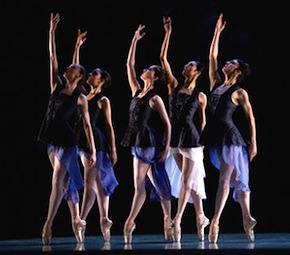 It was on Friday that I first heard of an event scheduled for Sunday afternoon, and in conflict with the premiere of Xerxes. Shinji Eshima, who tipped me off to it, said he himself — though he is the composer for the concert — just got the go-ahead.
It was on Friday that I first heard of an event scheduled for Sunday afternoon, and in conflict with the premiere of Xerxes. Shinji Eshima, who tipped me off to it, said he himself — though he is the composer for the concert — just got the go-ahead. The organization is the Performance Art Institute, and participants in the performance included current and recently retired stars of the San Francisco Ballet: Maria Kochetkova, Yuri Possokhov, and Peter Brandenhoff; also, soprano Christine Brandes.
Il fazzoletto (The handkerchief) was conceived and executed by artist in residence Andrew M. Mezvinsky, centering on his own mural-sized surreal drawings based on various 16th-century Venetian paintings.
Using a cut-out format and Plexiglas backing, the murals became three-dimensional renditions forming a metaphysical story. Shinji Eshima, double bassist in the San Francisco Ballet and Opera orchestras, composed and adapted 17th-century Baroque music to form a Baroque style opera. Enlisting Jerome Oremland, psychiatrist and psychoanalysis, writer, and winner of the 2011 New York Magazine On-the¬-Town Travel Short Story Contest, as librettist, Mezvinsky, Eshima, and Oremland “evolved the romance of the lost handkerchief searching for its identity and an enduring place in history as metaphor for everyone’s desire not to be overlooked and forgotten.”
Yuri Possokhov, retired principal dancer and choreographer in residence for the San Francisco Ballet, evolved a dramatic narrative ballet for each of the six arias. SFB principal dancer Maria Kochetkova became the metaphorical handkerchief, assisted by Possokhov and retired soloist ballet dancer Peter Brandenhoff in commedia dell’arte character roles. Christine Brandes sang, accompanied by David Latulippe, flute; Ken Iisaka, harpsichord; Victor Avdienko, vibraphone; and Olga Ortenberg-Rakitchenkov, harp.
With just a bit more advance notice next time, we won’t have to miss it.
Jan Lisiecki
From Jim Meredith, a reliable source in such matters: “Do you know about this 16-year-old Canadian pianist? He is really something special. I’m sitting here in tears hearing his Verbier Festival recital.”From Wikipedia:
Jan Lisiecki (born March 23, 1995) is a classical pianist. Born in Calgary, Canada, to Polish parents, Lisiecki is most well known as being extremely accomplished in piano as well as in academics at a young age.“I concisely remember the moment when my hands and feet gradually gained control and I was able to make the piano sing. My powerful relationship with the piano began and I started to discover my voice. As I play, I feel that the magic of the music is emerging from the piano, and also is developing in me. ... I feel the light shining into my heart. I experience joy, happiness, love; but also sadness and pain. And I have the strong desire to share it with others.” – Jan Lisiecki
Celebrating Gilchrist's Six Decades in Music
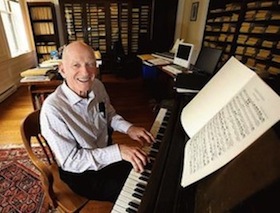 Robert Commanday writes from Friday’s night’s celebration of Alden Gilchrist’s 60-year tenure at the Calvary Presbyterian Church, a three-hour concert, attended by an audience estimated at 1,000:
Robert Commanday writes from Friday’s night’s celebration of Alden Gilchrist’s 60-year tenure at the Calvary Presbyterian Church, a three-hour concert, attended by an audience estimated at 1,000: Kent Nagano came from Montreal to conduct the 37-piece San Francisco Academy Orchestra, the Calvary Chancel Choir of 50, the Santa Rosa Children’s (Girls) Chorus and five soloists. A member at Calvary in his youth, Nagano had a formative experience singing in its summer choir in 1985.An unfamiliar but vintage Mozart, Litaniae de venerabili altaris Sacramento K. 243, was a choice selection for all the assembled forces, the tenor Brian Thorsett excelling in ornamental passagework.
There was the melodious, rich Tui Nati Vulnerati from Dvořák’s Stabat Mater, for choir and orchestra; the soprano Pamela Sebastian in the brilliant first aria from Bach’s Jauchzet Gott, Cantata 51; Dave Scott on the obbligato piccolo C trumpet, a bright performance. Later, mezzo-soprano Janet Campbell sang the opening aria from Bach’s beautiful, gentle Vergnügte Ruh, Cantata 170.
Under Nagano’s sure, elegant guidance, the Academy Orchestra gave a very good account of the evening’s music; the Chancel Choir was good, secure, and ample in sonority.
Gilchrist’s own compositions, refined and expressive, shared a gracefulness of melody and harmony that was elegant and restrained. They included two of his Letters From Stalingrad, poems by doomed German soldiers, translated by the late James Schevill, sung sensitively by Thorsett; and two movements from the cantata The Awakening of Job, with soloists Sebastian, Campbell, and Jeffrey Fields, a baritone with a dark, somewhat covered voice.
Another work was Daniel, a Children’s Musical, the unison melodic line sung by the Santa Rosa girls as one voice, exquisitely, later joined by the Chancel Choir women. There were also Jubilo based on three gospel songs, and his setting of Amazing Grace.
To begin, there was Monteverdi, from his Vespers of 1610, and two duets, soprano Sara Ganz joining Sebastian, also Thorsett and Jeffrey Fields.
Tucked in before the concluding Amazing Grace was Amazing Alden by the Dave Scott Jazz Quartet. Considerable narration was added to all this music along the way, and the lively Gilchrist pitched in at the piano in his own works and shared anecdotes. Calvary Presbyterian did his 60th proud.
Among the 99 Percent: 2.1 Million Artists (Minus a Few Superstars)
A new National Endowment for the Arts study has found 2.1 million artists in the U.S. workforce. The research has built on NEA’s previous Artists in the Workforce: 1990–2005 report, and five years were spent collecting data until the work’s publication in October 2011.The report’s summary states that artists are likely to be entrepreneurial, self-employed, and more educated than the workforce at large. This latest research confirms those earlier conclusions and shares new data about the working artist. Among the key findings:
- The 2.1 million artists make up 1.4 percent of the total workforce and 6.9 percent of the professional workforce (artists are classified as “professional workers”)
- More than one-third of artists in the survey (39 percent, or 829,000 workers) are designers (such as graphic, commercial, and industrial designers; fashion designers; floral designers; interior designers; merchandise displayers, and the like)
- Performing artists make up the next largest category (17 percent). In addition, each of the following occupations make up 10 percent of all artists: fine artists, art directors, and animators; writers and authors; and architects
- More than half of artists (54 percent) work in the private, for-profit sector; 35 percent are self-employed
- One in five (18 percent) of artists work in the “performing arts, spectator sports, and independent artists” category, including more than half (53 percent) of all musicians
- Some 14 percent of all artists (73 percent of producers and directors, 23 percent of actors, and 20 percent of writers and authors) work in information industries, such as the motion picture, video, and broadcasting industries, or newspaper, book, or directory publishing
- Women artists earn $0.81 cents for every dollar earned by men artists This gap is similar to that in the overall labor force
- Artists’ median wages and salaries ($43,000 in 2009) are higher than the median for the entire labor force ($39,000). Yet artists as a whole earn far less than the median wage of the professional category of workers ($54,000), to which they belong. Architects make the highest median wage ($63,000), while workers who are classified as other entertainers had the lowest ($25,000)
- New York and California have the highest numbers of artists in the U.S. Oregon and Vermont have 20 percent greater-than-average numbers of artists, with writers and authors especially prominent.
- The San Jose metro area has the highest level of employment in industrial design services (more than three times the U.S. average)
